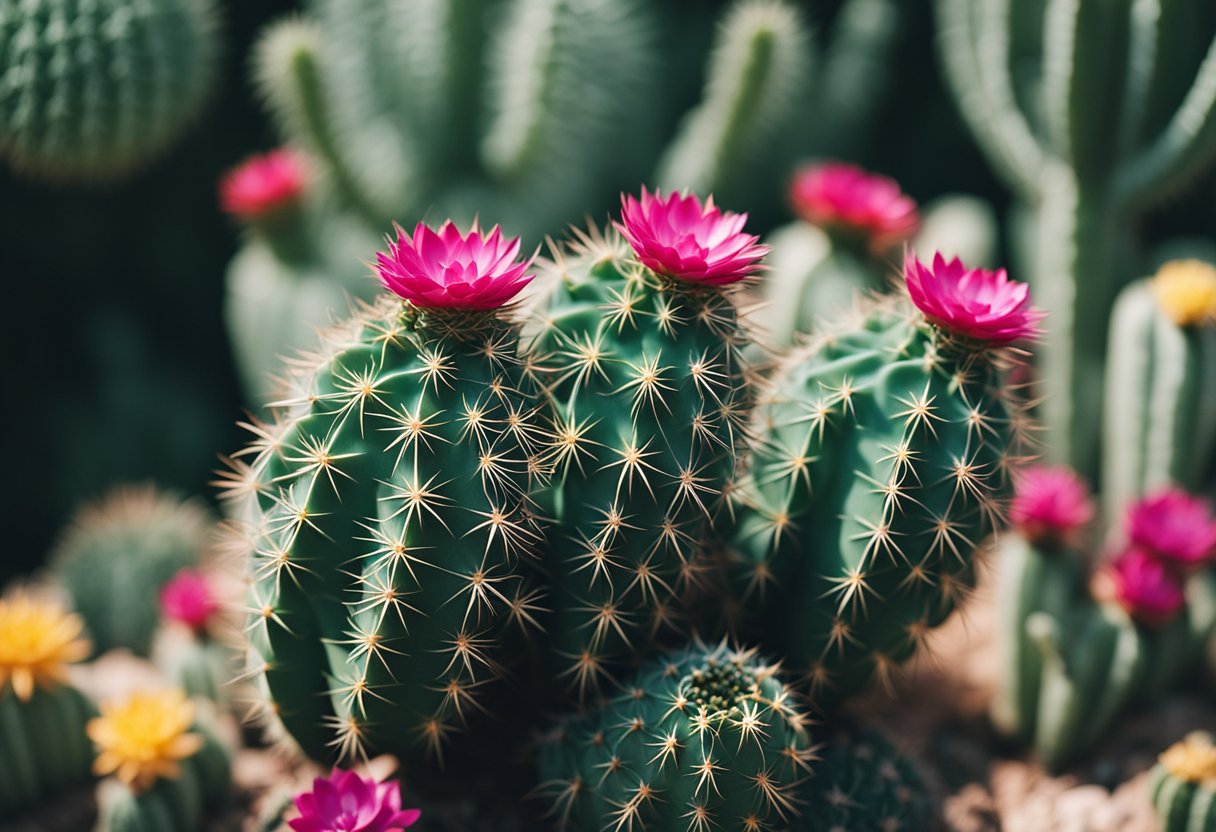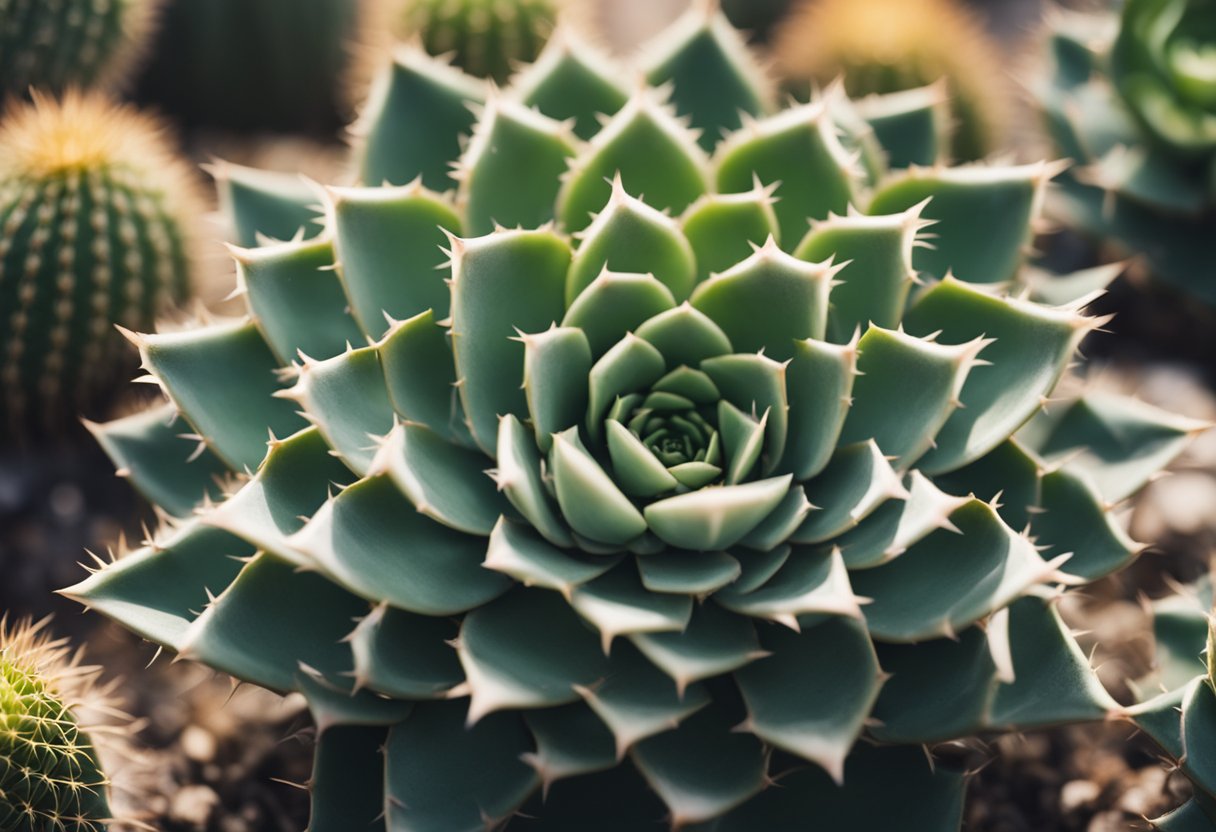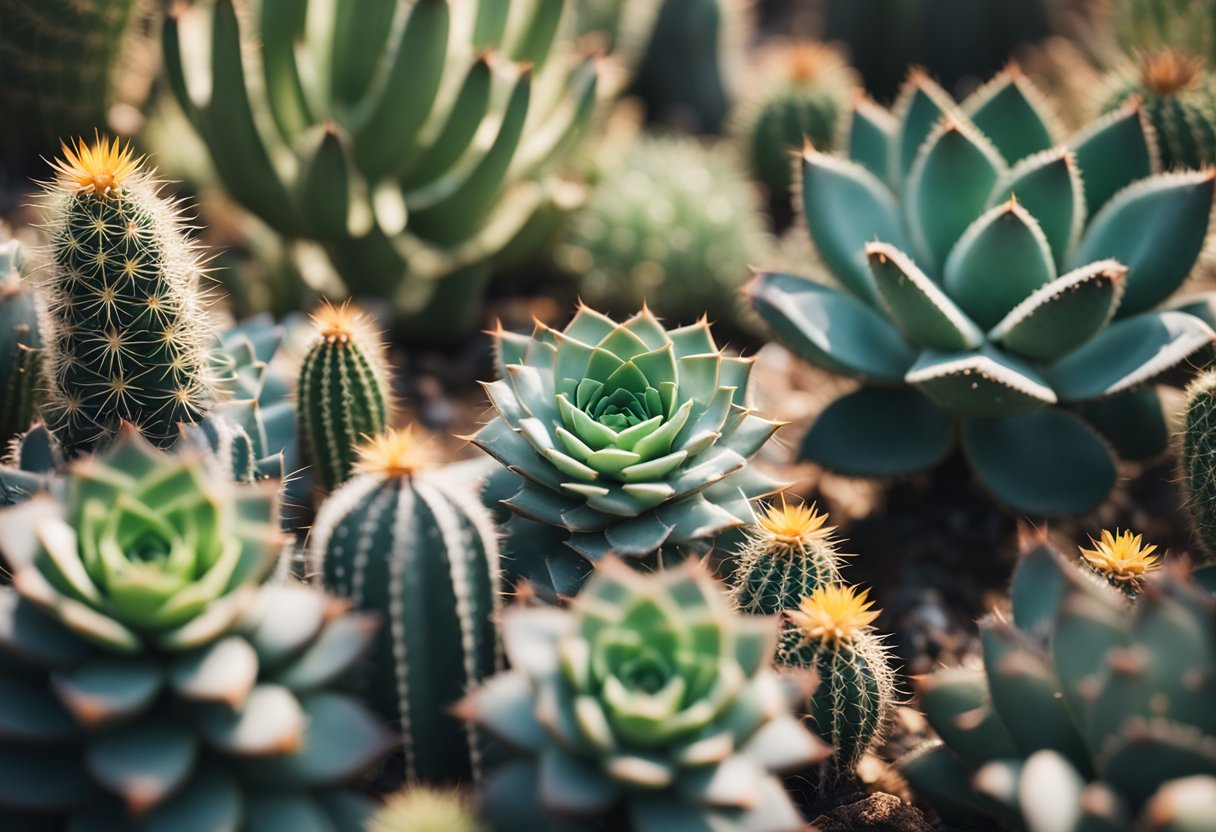Are Cacti Succulents? A Clear and Confident Answer
Cacti and succulents are often used interchangeably, but are they really the same thing? The question of whether cacti are succulents is a common one, and the answer is not as straightforward as it may seem. While all cacti are succulents, not all succulents are cacti.
This post may contain affiliate links, which means I’ll receive a commission if you purchase through my link, at no extra cost to you. Please read full disclosure here.

Succulents are plants that store water in their leaves, stems, or roots, allowing them to survive in arid environments. The term “succulent” comes from the Latin word “succus,” meaning juice or sap. Cacti are a type of succulent, but they are not the only ones. Other examples of succulents include aloe vera, jade plants, and agave. Despite their similar characteristics, there are some key differences between cacti and other succulents.
Understanding Cacti and Succulents

Cacti and succulents are often used interchangeably, but they are not the same. While all cacti are succulents, not all succulents are cacti. Understanding the differences between these two plant groups is important for proper care and identification.
Defining Cacti
Cacti are a type of succulent that belong to the family Cactaceae. They are known for their unique appearance, with spines or thorns growing from their stems and branches. Cacti are adapted to survive in arid environments, with the ability to store water in their thick stems. They also have shallow roots that allow them to quickly absorb water when it is available.
Cacti come in a wide variety of shapes and sizes. Some grow tall and columnar, while others are low-growing and clumping. Some cacti even have flattened stems that resemble leaves. Cacti are also known for their showy flowers, which bloom in a range of colors.
Defining Succulents
Succulents are a group of plants that are defined by their ability to store water in their leaves, stems, or roots. They are found in a variety of environments, from deserts to rainforests. Succulents come in a wide range of shapes and sizes, from tiny rosettes to large trees.
Succulents are often used in landscaping and indoor gardening due to their unique appearance and low maintenance requirements. Some popular succulent varieties include aloe, jade, and echeveria.
While cacti and succulents share some similarities, there are some key differences between the two. Cacti are defined by their spines or thorns, while succulents do not necessarily have these features. Additionally, cacti are a specific type of succulent that belong to the family Cactaceae.
In summary, cacti and succulents are both types of plants that are adapted to survive in arid environments. While cacti are a specific type of succulent, not all succulents are cacti. Understanding the differences between these two plant groups is important for proper care and identification.
Distinct Features of Cacti and Succulents

Physical Characteristics
Cacti and succulents are often grouped together due to their similar appearance and ability to thrive in arid conditions. However, there are some distinct differences between them. One of the most noticeable differences is their physical characteristics. Cacti plants generally have few or no leaves, while succulents have fleshy leaves. Cacti are distinguished from the rest of the succulents by the rounded indentations along their stems, which are called areoles. From the areoles, spines (usually) grow. The spines can be straight or curved, and they can be long or short. Succulents, on the other hand, have a variety of shapes, including rosettes, columns, and spreading mats. They also have spikes, hairs, and leaves that can be smooth or rough.
Adaptations to Arid Conditions
Another important difference between cacti and succulents is their adaptations to arid conditions. Cacti are adapted to live in extremely dry environments, and they have evolved several strategies to survive in these conditions. For example, cacti have thick, waxy skin that helps to retain moisture within their stems. They also have spines, which protect them from predators and help to reduce water loss. In addition, cacti have shallow, wide-spreading roots that allow them to quickly absorb water when it rains.
Succulents, on the other hand, are adapted to a wide range of arid and semi-arid environments, and they have evolved a variety of strategies to survive in these conditions. For example, succulents have fleshy leaves, which store water for times of drought. They also have shallow roots, which allow them to quickly absorb water when it rains. In addition, succulents have a variety of adaptations to protect them from predators, such as spikes, hairs, and rough leaves.
In conclusion, while cacti and succulents have some similarities, such as their ability to survive in arid conditions, they also have distinct differences in their physical characteristics and adaptations to these conditions. Understanding these differences can help gardeners choose the right plants for their environment and care for them properly.
Common Types of Cacti and Succulents
Cacti and succulents are often grouped together due to their similar characteristics, but they are not the same. While all cacti are succulents, not all succulents are cacti. Cacti are known for their unique appearance with spines and thick stems, while succulents are known for their fleshy leaves and ability to store water.
Cacti Varieties
Some of the most common types of cacti include the Saguaro, Prickly Pear, and Century Plant. The Saguaro cactus is native to the Sonoran Desert and is known for its tall, columnar shape with arms that can grow up to 50 feet tall. The Prickly Pear cactus is known for its flat, paddle-shaped pads and edible fruit. The Century Plant, also known as Agave, is a large succulent that can take up to 10 years to bloom and produces a tall flower stalk that can reach up to 30 feet.
Succulent Varieties
There are many types of succulents, including Aloe, Lithops, and Sedums. Aloe is a common succulent known for its medicinal properties and is often used in skincare products. Lithops, also known as living stones, are small, stone-like succulents that grow in rocky areas. Sedums, also known as stonecrops, are a diverse group of succulents that come in a range of colors and shapes.
Other popular succulent varieties include the Jade Plant, Hens and Chicks, and Purslane. The Jade Plant is a popular houseplant known for its thick, fleshy leaves and ease of care. Hens and Chicks, also known as Sempervivum, are small, rosette-shaped succulents that grow in clusters. Purslane is a trailing succulent with small, fleshy leaves that is often used in salads.
In conclusion, while cacti and succulents share some similarities, they are not the same. Cacti are known for their spines and thick stems, while succulents are known for their fleshy leaves and ability to store water. Some common cacti varieties include the Saguaro, Prickly Pear, and Century Plant, while popular succulent varieties include Aloe, Lithops, and Sedums.
Cultivation and Care
Cacti and succulents are generally low-maintenance plants that can thrive both indoors and outdoors. They require minimal watering and can tolerate a wide range of temperatures. However, proper cultivation and care are crucial to ensure their health and longevity.
Indoor Cultivation
When growing cacti and succulents indoors, it is important to provide them with plenty of sunlight. These plants require at least six hours of direct sunlight per day, so it is best to place them near a south-facing window. If natural light is not available, artificial grow lights can be used.
Proper drainage is also essential for indoor cultivation. It is recommended to use a well-draining potting soil and a container with drainage holes. Overwatering can lead to root rot, so it is important to allow the soil to dry out between waterings.
Humidity levels can also affect indoor cultivation. Cacti and succulents prefer dry air, so it is best to avoid placing them in rooms with high humidity levels, such as bathrooms.
Outdoor Cultivation
When growing cacti and succulents outdoors, it is important to choose the right location. These plants prefer full sun to partial shade, depending on the species. It is also important to choose a location with well-draining soil to prevent waterlogging.
Cacti and succulents are generally tolerant of drought, but they still require occasional watering, especially during hot and dry weather. It is recommended to water deeply but infrequently, allowing the soil to dry out between waterings.
When growing cacti and succulents outdoors, it is also important to consider the USDA plant hardiness zone. Different species have different temperature requirements, so it is important to choose plants that are suitable for the local climate.
In summary, proper cultivation and care are crucial for the health and longevity of cacti and succulents. Whether grown indoors or outdoors, these plants require well-draining soil, proper watering, and adequate sunlight. By following these guidelines, gardeners can enjoy these unique and beautiful plants for years to come.
Cacti and Succulents in the Wild
Habitat
Cacti and succulents are often found in arid conditions, such as deserts, where rainfall is scarce and temperatures can vary greatly. They are well-adapted to these harsh environments and can survive long periods of drought. Some species of cacti and succulents can even survive in subzero temperatures.
Survival Strategies
Cacti and succulents have evolved a number of survival strategies to help them thrive in their environments. One such strategy is the ability to store water in their tissues, which allows them to survive long periods of drought. They also have shallow root systems that allow them to quickly absorb rainwater when it does fall.
Many cacti and succulents also have spines and thorns to deter predators from eating them. These spines and thorns can also help to reflect sunlight, reducing the amount of heat absorbed by the plant.
In addition to their physical adaptations, cacti and succulents have also developed unique reproductive strategies. Some species, like the saguaro cactus, can live for over 150 years and can produce thousands of seeds in a single year. Other species, like the agave, only flower once in their lifetime and then die, leaving behind a cluster of offspring.
Overall, cacti and succulents have developed a range of strategies to help them survive in the wild. From their ability to store water to their spines and thorns, these plants have evolved to thrive in some of the harshest environments on Earth.
Unique Cacti and Succulents
Unique Cacti
Cacti are known for their unique appearance and ability to survive in harsh conditions. One of the most iconic cacti is the giant saguaro (Carnegiea gigantea), which can grow up to 40 feet tall and live for over 200 years. It is native to the Sonoran Desert in Arizona, California, and Mexico. The saguaro has a unique form with arms that can grow in different directions, and it blooms with white flowers in late spring to early summer.
Another unique cactus is the Easter Lily Cactus (Echinopsis oxygona), which is known for its large, fragrant yellow flowers that bloom in the spring. This cactus is native to South America and is easy to grow in bright light.
Unique Succulents
Succulents come in many forms and colors, and they are known for their ability to store water in their leaves and stems. One unique succulent is the Lithops (Lithops spp.), also known as “living stones.” These small, low-growing plants are native to southern Africa and have a unique appearance that resembles stones or pebbles. They come in a variety of colors and patterns and are easy to care for.
Another unique succulent is the String of Pearls (Senecio rowleyanus), which is a trailing plant with small, spherical leaves that resemble pearls. It is native to South Africa and is easy to propagate by division.
Both cacti and succulents have unique root systems that are adapted to their arid environments. They have shallow, widespread roots that can quickly absorb water and nutrients when it is available. They also have specialized adaptations for photosynthesis, such as scale-like leaves that reduce water loss.
Overall, cacti and succulents are fascinating plants with unique adaptations for survival in harsh environments. They are easy to care for and come in a variety of forms and colors, making them a great addition to any collection.